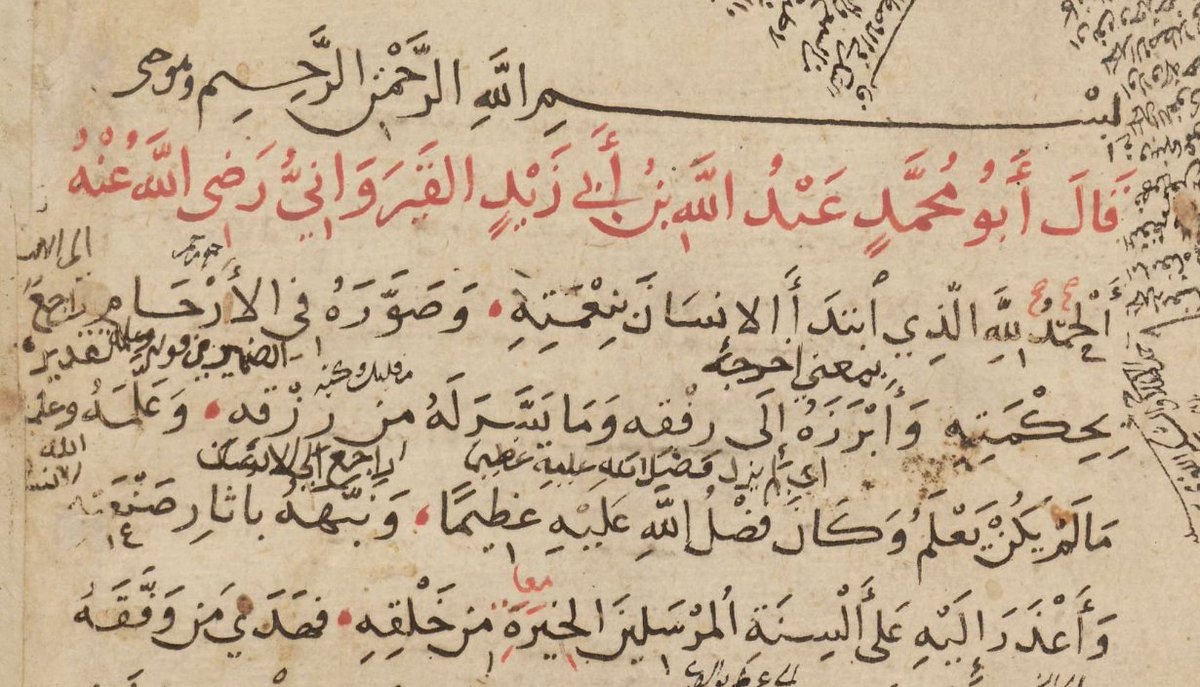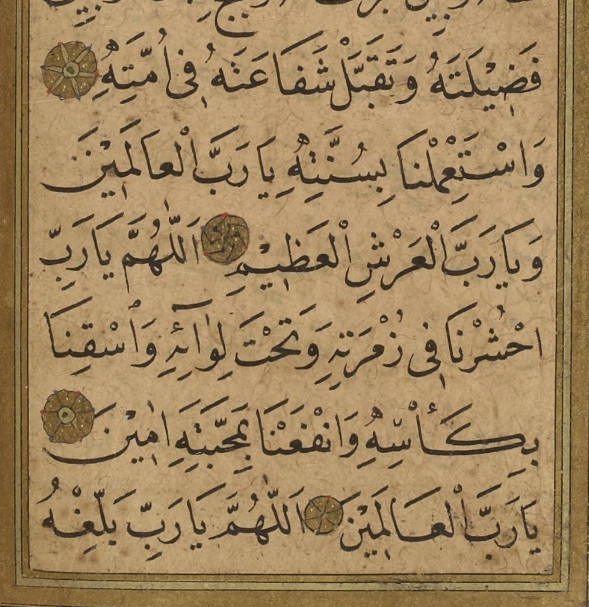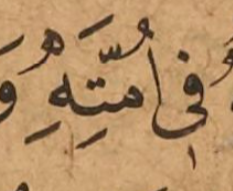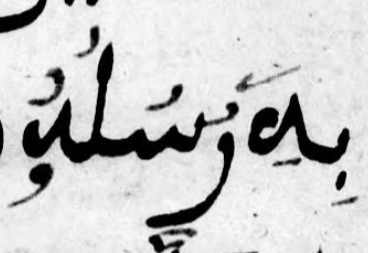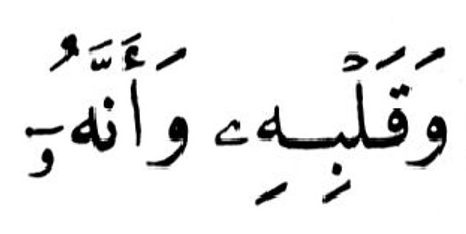So let& #39;s talk some more Classical Arabic orthography! Vocalisation. People who learn to read Arabic today generally learn there are three vowel signs: fatḥah, ḍammah, kasra. Write them twice for tanwīn. Simple right? But there& #39;s a lot more going on in manuscripts
There are in fact multiple ways of writing the kasrah. In Naskh manuscripts you can have the small oblique lines below, or alternatively a vertical strokes that looks somewhat like a little alif below. Often, these two signs are used interchangeably, but not always!
Escpecially in later Naskhi manuscripts, the alif below exclusively marks ī. This is very common in Ottoman Qurans. The third person pronoun is lengthened after short vowels a-hū, u-hū but i-hī, despite now wāw or yāʾ being employed. Manuscripts use this sign to mark -hī
However, there are also manuscripts that consistently mark word-internal long ī with the dagger alif below, but do NOT mark it on the pronoun.
When it is regular, one must seriously consider that the writer actually considered these to be short.
https://gallica.bnf.fr/ark:/12148/btv1b84322110/f160.item.r=al-%C7%A6az%C5%ABl%C4%AB.zoom">https://gallica.bnf.fr/ark:/1214...
When it is regular, one must seriously consider that the writer actually considered these to be short.
https://gallica.bnf.fr/ark:/12148/btv1b84322110/f160.item.r=al-%C7%A6az%C5%ABl%C4%AB.zoom">https://gallica.bnf.fr/ark:/1214...
In modern pronunciation of Classical Arabic and (to my great annoyance) in many transcriptions of Classical Arabic these forms are treated as short, although the grammarians are quite clear on this: doing so is a mistake except on the rare occasion of using it as a poetic license
Somewhat surprisingly a similar tool is not normally employed for ḍammah. I& #39;ve seen some Quranic manuscripts that use an up-side-down ḍammah to write the ū of hū, but that one is NEVER used word-internally. Modern Indo-Pakistani Qurans still use that. Never seen it non-Quranic
In the Maghrebi script, word-internal ī is not expressed with a seperate sign, but for the ī and ū of -hī and hū they use miniature returning yāʾ and wāw (looks identical to ḍammah, but is written along the actual ḍammah).
bi-hī (yāʾ on top) rusulu-hū (wāw below).
bi-hī (yāʾ on top) rusulu-hū (wāw below).
This practice might be familiar to you, because this is the strategy that many print Qurans (including the Cairo Edition, and the popular Medina Mushaf) use today, although there the yāʾ and wāw are placed after the hāʾ.
Naskhi Qurans in ottoman style that use a small alif below for ī also usually use a small alif above for ā, even when the word is spelled plene with an ʾalif that follows and not just in words like ذٰلك and هٰذا. I don& #39;t think this is very common outside of Qurans...
So this means that Naskhi Qurans of this style have a separate sign for: i, ī, a, ā but NO separate sign for u and ū! This lack of symmetry keeps me up at night. If anyone has a plausible explanation for it I& #39;m all ears!
That& #39;s it for today, soon a thread on hamzah placement!
That& #39;s it for today, soon a thread on hamzah placement!
If you enjoyed this thread and want me to do more of it, please consider buying me a coffee.
https://ko-fi.com/phdnix .">https://ko-fi.com/phdnix&qu...
If you want to support me in a more integral way, you can become a patron on Patreon! https://www.patreon.com/PhDniX ">https://www.patreon.com/PhDniX&qu...
https://ko-fi.com/phdnix .">https://ko-fi.com/phdnix&qu...
If you want to support me in a more integral way, you can become a patron on Patreon! https://www.patreon.com/PhDniX ">https://www.patreon.com/PhDniX&qu...
ADDENDUM: I just remembered this thread by @joumajnouna from a while ago. A cool New Style manuscript that indeed has a "long ḍammah" sign for writing -hū (and a "long kasra" sign for writing ī) and, uniqely a sign for writing the fatḥah of aw/ay. https://twitter.com/joumajnouna/status/1126482590758838272">https://twitter.com/joumajnou...

 Read on Twitter
Read on Twitter